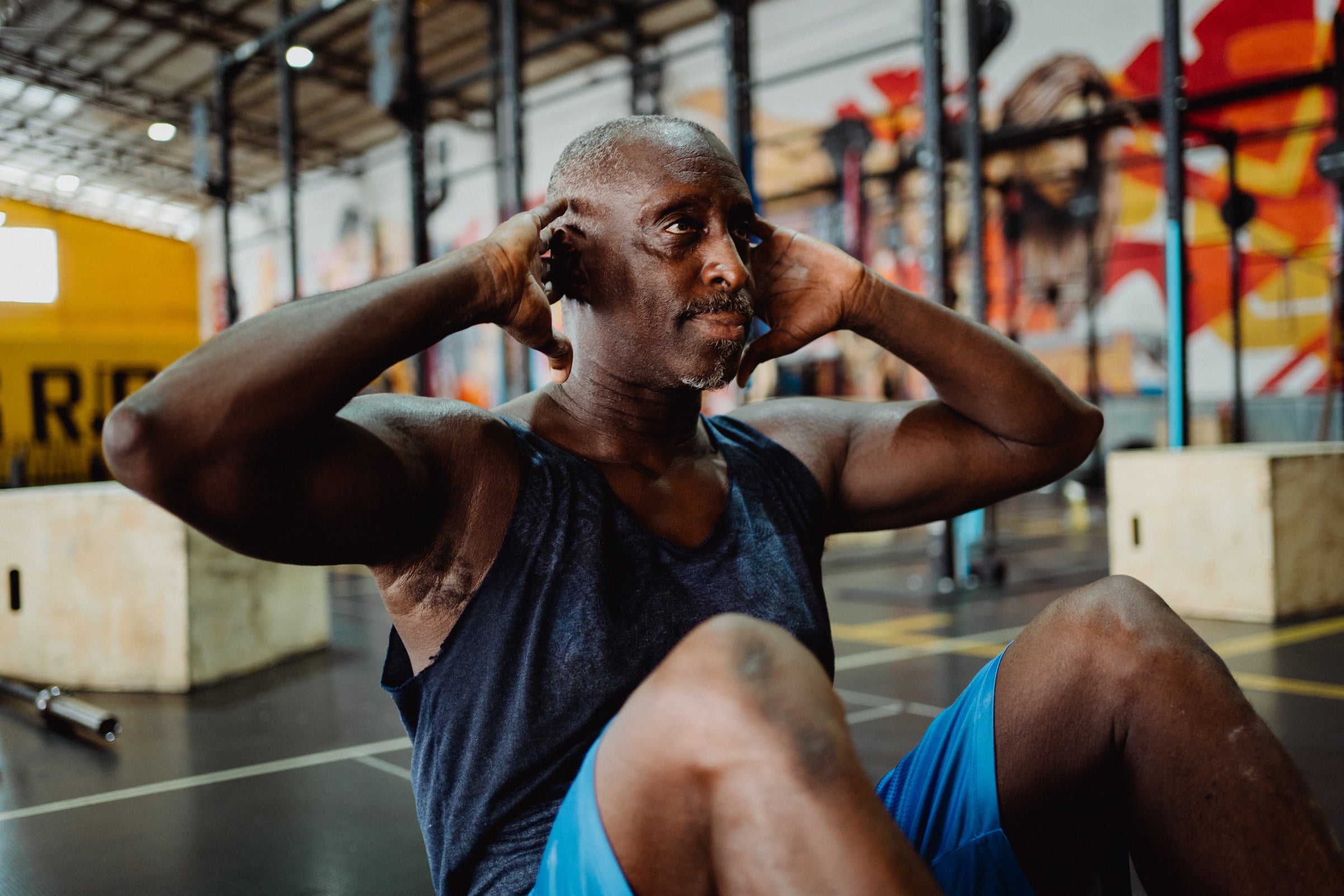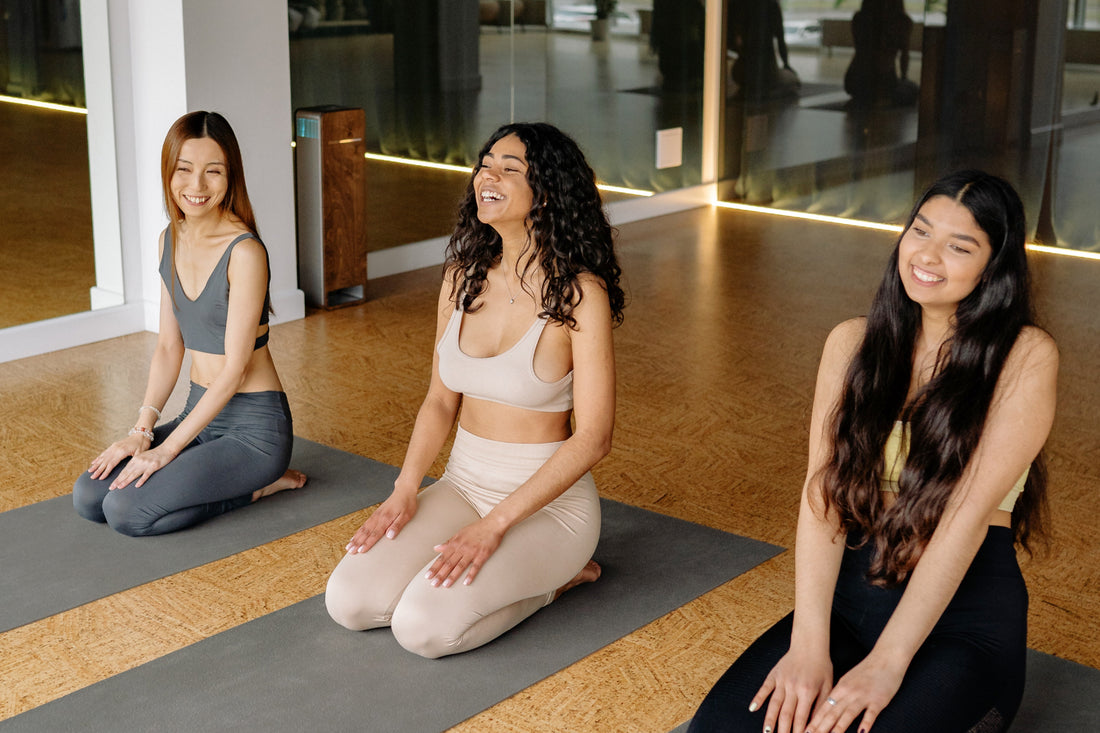En el mundo moderno, la mayoría de nosotros llevamos un estilo de vida muy ajetreado, tenemos malos hábitos alimentarios y tendemos a descuidar mucho nuestra salud. Privamos a nuestro cuerpo de minerales, nutrientes y vitaminas esenciales al consumir alimentos procesados y poco saludables.
Además, solemos estar demasiado ocupados con nuestro trabajo y nuestras responsabilidades, y a menudo dejamos de hacer ejercicio y ejercicio por completo. La falta de ejercicio y actividad física suele tener un efecto negativo en la forma y la salud de nuestro cuerpo. El cuerpo no es capaz de eliminar toxinas y la grasa se acumula y causa problemas más adelante en la vida.
Esto tiene un alto costo para nuestra salud en general y los problemas se siguen acumulando a medida que envejecemos. Pero nunca es demasiado tarde para comenzar o cambiar. La conciencia sobre la salud, el ejercicio y los buenos hábitos alimenticios está aumentando: las personas están comenzando a adaptarse cambiando sus estilos de vida sedentarios para llevar una vida de calidad.
Ahora bien, es bastante intuitivo que no puedes mantener el mismo nivel de condición física a los 50 años que a los 20, pero con un régimen de dieta y ejercicios específicos, puedes reiniciar tu rutina y estar en forma nuevamente.
Hablemos de las diferencias y los riesgos a una edad avanzada, cómo puedes superarlos para reiniciar tus entrenamientos después de los 50 y garantizar una condición física óptima y un cuerpo saludable para acompañarlo.
Las diferencias a los 50
Los cambios físicos que se producen en el cuerpo a medida que crece con la edad son evidentes y comunes. Con la edad, la masa muscular, así como la fuerza de los músculos, se reducen drásticamente. Los músculos se vuelven menos hidratados y, como resultado, pierden flexibilidad.
Además de los músculos, se producen otros cambios, como el debilitamiento de los huesos y de la vista, dolores articulares y mayores probabilidades de padecer enfermedades crónicas. Los problemas subyacentes del organismo empiezan a aparecer y son habituales problemas como la hipertensión, la diabetes y las enfermedades cardiovasculares.
Además, a los 50 años, uno tiende a cansarse más fácilmente , necesita una dieta mucho mejor y concentrada y requiere más descanso. Aunque la diferencia en el cuerpo, su capacidad y sus necesidades son marcadas, se puede manejar fácilmente con precaución, planificación, voluntad y concentración.

Los riesgos que implica tener 50 años
Con el aumento de la edad, los riesgos también son altos con cualquier actividad física que realices. Con cambios corporales visiblemente evidentes, puede ser muy riesgoso si intentas levantar pesos muy pesados, realizar actividades y ejercicios extenuantes durante períodos prolongados y realizar entrenamientos intensos como correr en pendientes, entrenamiento de fuerza del core, etc.
Si no tienes cuidado con los ejercicios que haces, corres un alto riesgo de sufrir lesiones como desgarros del manguito rotador , hipertensión, problemas cardiovasculares e incluso fracturas de huesos. Dado que la idea de empezar a hacer ejercicio es mejorar tu salud y protegerte de enfermedades en lugar de aumentar los riesgos o las preocupaciones por la seguridad, es de suma importancia que comprendas los cambios en tu cuerpo y sigas un régimen supervisado y guiado.
Ahora, echemos un vistazo a las mejores formas que puedes seguir para reiniciar tu estructura de entrenamiento según tu edad y obtener los mejores resultados posibles para ti.
Entrenamiento, pero con límites: ¿cuánto ejercicio debes hacer?
A los 50, es necesario preparar un programa de entrenamiento específico que se adapte a su cuerpo. Dado que el cuerpo sufre múltiples cambios con el paso de la edad, es fundamental controlar la carga a la que se somete. Por ello, debe hacer ejercicio y entrenar de forma limitada y bajo la supervisión adecuada.
En lo que respecta a los expertos y la ciencia, la Asociación Estadounidense del Corazón recomienda hacer ejercicio o ejercicio hasta 150 minutos a la semana, lo que básicamente se reduce a 30 minutos al día, 5 días a la semana. Si no puede hacer esto, entonces debe intentar hacer ejercicio al menos 3 días o más durante un mínimo de 10 minutos.
Es importante que te tomes un descanso de al menos 2 días a la semana. El cuerpo tarda más tiempo en recuperarse a medida que aumenta la edad, y es necesario tener un descanso completo y dar tiempo a los músculos para que recuperen su fuerza.
¡Empezar es la clave, pero empieza lentamente!
Siempre que se vuelve a trabajar después de un descanso, es necesario empezar lentamente y aumentar la velocidad a medida que el cuerpo se adapta a la nueva rutina. Esto es especialmente cierto una vez que se llega a cierta edad, ya que el cuerpo necesita aún más tiempo para recuperarse adecuadamente.
Debes comenzar con un entrenamiento de baja intensidad durante un período limitado. Gradualmente, puedes aumentar la intensidad, el peso e incluso el tiempo. Mantente dentro de los límites de tu cuerpo y nunca te esfuerces más allá de lo que puedas manejar.
Incluso puedes empezar a hacer un seguimiento de tu progreso. Para ello, puedes utilizar una herramienta en línea o una aplicación móvil, o incluso utilizar pulseras de actividad física que te ayuden a seguir tu progreso. Establece objetivos razonables y recomendados para ti mismo y trabaja poco a poco para ir mejorando hasta alcanzar tus objetivos.

¡Manténgase hidratado tanto como sea posible!
Tus músculos están compuestos de agua y, a medida que te ejercitas y transpiras, tu cuerpo tiende a perder agua muy rápidamente. A una edad más avanzada, el proceso se acelera aún más y puede provocar graves consecuencias para tu salud .
Beber una gran cantidad de agua, idealmente entre 8 y 10 vasos al día o más, puede mantener su cuerpo hidratado y ayudar a que sus músculos se recuperen más rápido . Además, al mantenerse hidratado, puede mantenerse con energía durante períodos más prolongados, lo que incluso lo ayudará a aumentar la intensidad de su entrenamiento y mantenerse concentrado.
Además, considere beber agua alcalina, que es agua con un pH alcalino de 8 o 9. El agua alcalina se digiere fácilmente en las células e incluso ayuda a mantenerte hidratado durante más tiempo. También combate problemas como la acidez estomacal y el reflujo ácido. Puede comprar la botella DYLN , que le proporciona agua alcalina en cualquier momento que desee y le ayuda a mantenerse saludable.
Alimentate con una dieta sana y equilibrada
Llevar una dieta sana y equilibrada es necesario a cualquier edad. Sin embargo, a medida que envejecemos, el cuerpo necesita más nutrientes para mantenerse en forma. La demanda aumenta aún más cuando empezamos a hacer ejercicio. El cuerpo se cansa rápidamente y necesita energía a través de la nutrición y los minerales.
Por eso es aún más importante comer los alimentos adecuados en las cantidades adecuadas. Debes planificar tu dieta de forma que tu ingesta de proteínas sea un poco mayor, mientras que comes menos carbohidratos y grasas malas. Debes comer más verduras y alimentos integrales y reducir por completo los snacks procesados y poco saludables.
Si sigues una buena dieta, le aportarás vitaminas, antioxidantes y minerales importantes a tu cuerpo, que te mantendrán en forma. También debes recordar comer alimentos nutritivos después de hacer ejercicio . Esto te ayudará a recuperar energías rápidamente y podrás pasar el resto del día lleno de vitalidad y entusiasmo.

Tenga cuidado y evite lesiones
A los 50 años, se pierde mucha masa muscular, por lo que la fuerza disminuye y se es muy susceptible a sufrir lesiones. La densidad de los huesos se reduce con la edad y se vuelven más vulnerables a las fracturas. Poner presión adicional sobre los músculos, los huesos y las articulaciones puede ponerlo en riesgo de sufrir una lesión grave o incluso una fractura.
Es importante tener cuidado y no presionarse demasiado. Si se ejercita en el gimnasio con máquinas, debe hacer series y repeticiones limitadas. Además, debe levantar pesos exigentes, pero nunca debe intentar sobrepasar los límites. Incluso en otras actividades físicas como cardio, correr, andar en bicicleta e incluso al estirarse, debe evitar excederse.
Siempre debes mantenerte concentrado en tus objetivos y recordar que, incluso con un ejercicio limitado, puedes alcanzar tus metas. Por otro lado, una mala decisión o un descuido pueden causar lesiones graves. Eso no solo puede impedirte alcanzar una condición física óptima, sino que también puede causar traumas mentales, dolor y diversos problemas relacionados.
Conclusión
Con el paso de la edad y la limitación de la capacidad del cuerpo, la mayoría de las personas dejan de hacer ejercicio y dejan que las enfermedades crónicas se apoderen de ellas. Por lo tanto, sin importar la edad, es importante hacer ejercicio y mantenerse en forma y saludable.
Dado que el cuerpo cambia a medida que envejecemos, no podemos ni debemos tener un régimen de ejercicios o entrenamiento similar al que teníamos cuando éramos más jóvenes. Es de suma importancia que comprendamos nuestro cuerpo y decidamos nuestro régimen de ejercicios según la capacidad de éste.
Puede seguir los pasos mencionados anteriormente como guía y reiniciar su rutina de ejercicios en consecuencia. Esto lo protegerá de diversos riesgos, como aumento de la presión arterial, fracturas de huesos o daños musculares.
Como resultado, podemos concluir que siguiendo una dieta correcta , manteniéndonos hidratados y teniendo cuidado, podemos mantenernos en forma incluso después de los 50 años.






